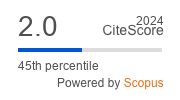Quasi-experiments to estimate the economic impact of research infrastructures
DOI:
https://doi.org/10.23726/cij.2023.1492Keywords:
quasi-experiment, public procurement, research infrastructures, innovationAbstract
The paper discusses the application of the quasi-experiment research design to the empirical evaluation of large-scale research infrastructures' socio-economic benefits. Specifically, after introducing the quasi-experimental methodology, it provides an illustrative example in which a quasi-experiment approach is used to assess the technological procurement spillovers of the Italian Space Agency.
References
Arrow, K. J. (1962). The economic implications of learning by doing. The review of economic studies, 29(3), 155-173.
Augurzky, B. and Kluve, J. (2007). Assessing the Performance of Matching Algorithms When Selection into Treatment Is Strong. Journal of Applied Econometrics, 22(3), 533–557.
Callaway, B., Sant’Anna, P., 2020. Difference-in-Differences with multiple time periods. Journal of Econometrics, 225 (2), 200–230.
Castelnovo P., Florio M., Forte S., Rossi L. and Sirtori E. (2018). The economic impact of technological procurement for large-scale research infrastructures: Evidence from the Large Hadron Collider at CERN. Research Policy, Vol. 47(9): 1853-1867.
Castelnovo, P., Clò, S., & Florio, M. (2023a). A quasi-experimental design to assess the innovative impact of public procurement: An application to the Italian space industry. Technovation, 121, 102683.
Castelnovo P., Catalano J., Giffoni F. and Landoni M. (2023b). The outcomes of public procurements: an empirical analysis of the Italian space industry. The Journal of Technology Transfer, available online at: https://link.springer.com/article/10.1007/s10961-023-10038-6
Fadlon, I., Nielsen, T.H., 2021. Family labor supply responses to severe health shocks: evidence from Danish administrative records. Am. Econ. J. Appl. Econ. 13 (3), 1–30.
Florio, M. (2019). Investing in science: Social cost-benefit analysis of research infrastructures. MIT Press.
Florio M., Giffoni F., Giunta A. and Sirtori E. (2018). Big science, learning, and innovation: evidence from CERN procurement. Industrial and Corporate Change, 27 (5), 915-936
Hahn J., Todd P. and Van der Klaauw W. (1999). Evaluating the Effect of an Antidiscrimination Law Using a Regression-Discontinuity Design. NBER paper n. 7131.
Meyer, B. D. (1995). Natural and Quasi-Experiments in Economics. Journal of Business & Economic Statistics, 13(2), 151–161.
Nichols A.L. and Edlund J. (2023). The Cambridge Handbook of Research Methods and Statistics for the Social and Behavioral Sciences. Cambridge University Press, Cambridge, UK.
Downloads
Published
How to Cite
Issue
Section
Categories
License
Copyright (c) 2023 Massimo Florio, Paolo Castelnovo

This work is licensed under a Creative Commons Attribution 4.0 International License.
Authors who publish with this journal agree to the following terms:
- Authors retain copyright and grant the journal right of first publication with the work simultaneously licensed under a Creative Commons Attribution License that allows others to share the work with an acknowledgement of the work's authorship and initial publication in this journal.
- Authors are able to enter into separate, additional contractual arrangements for the non-exclusive distribution of the journal's published version of the work (e.g., post it to an institutional repository or publish it in a book), with an acknowledgement of its initial publication in this journal.
- Authors are permitted and encouraged to post their work online (e.g., in institutional repositories or on their website) prior to and during the submission process, as it can lead to productive exchanges, as well as earlier and greater citation of published work (See The Effect of Open Access).


